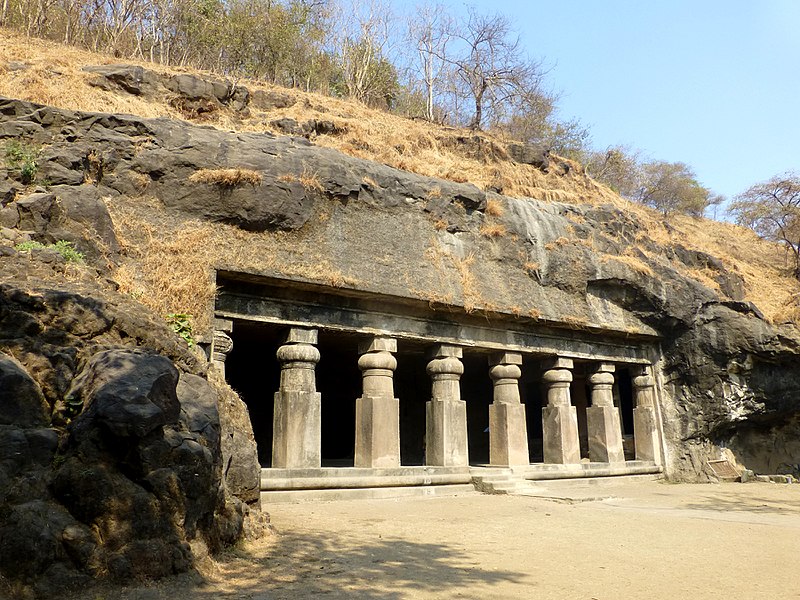Elephanta Caves (Maheshamurthy / Trimurti Shiva), Maharashtra

Address
Elephanta Caves (Maheshamurthy / Trimurti Shiva), Elephanta Island Navi Mumbai, Maharashtra District – 400094
Diety
Maheshamurthy / Trimurti
Introduction
Elephanta Island, or Gharapuri, is about 10 km (6.2 mi) east of the Gateway of India in the Mumbai Harbour and less than 2 km (1.2 mi) west of Jawaharlal Nehru Port. Gharapuri is a small village on the south side of the island. The Elephanta Caves is connected by ferry services from the Gateway of India, The temple is enclosed in the cave, it has interior walls but no exterior wall. The pillars create space and symmetric rhythm as they support the weight of the hill above. The main mandapa recesses into a pillared vestibule (ardha-mandapa) on the south side, while a pillared portico (mukha-mandapa) connects it to the main entrance. Embedded within the Great Cave are dedicated shrines, the largest of which is the square plan Linga shrine It is a square garbha-griya (womb house) with four entrances, located in the right section of the main hall. Steps lead from the four doorways into the sanctum, which has a linga in the mulavigraha style. Each doorway is guarded by a dvarapala on each side, for a total of eight dvarapalas, their heights spanning floor to the ceiling These were badly damaged when the Portuguese ceded control of this region to the British. The linga shrine is surrounded by a mandapa and circumambulation path (pradakshina-patha) as in other Hindu temples. The pillars are similarly aligned east-west to this shrine and have an east entrance. Overlaid, as if fused, on the architecture of this temple is another open temple aligned to the north-south direction with three faced Sadashiva as its focal center. One features the abstract, unmanifest, aniconic symbol of Shiva, the other anthropomorphic, manifest, iconic symbol of Shiva. The mandapa pillars of the two align up. The northern entrance to the cave is flanked by two panels of Shiva dated to the Gupta period, both damaged. Smaller shrines are located at the east and west ends of the caves. The eastern sanctuary serves as a ceremonial entrance, and its shrine shows iconography of Shaktism tradition.
Puranic Significance
The ancient history of the island is unknown in either Hindu or Buddhist records. Archeological studies have uncovered many remains that suggest the small island had a rich cultural past, with evidence of human settlement by possibly the 2nd century BC. The Elephanta site was first occupied by Hinayana Buddhists, before the arrival of the Brahmans to the island, to raise a large stupa to the Buddha with seven smaller stupas around it, probably around the 2nd century BCE it maintained by Archaeological Survey of India and UNESCO
Century/Period/Age
2nd century BC.
Managed By
Archaeological Survey of India and UNESCO
Nearest Bus Station
Mumbai port
Nearest Railway Station
Mumbai
Nearest Airport
Mumbai









